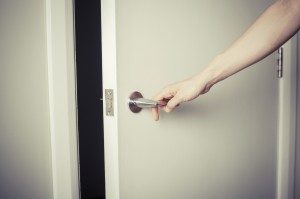
One of our Project Managers recently performed a Locked doorWith-Site-Visit Reserve Study Update for a long-time client. Typically this is a smooth process, observing the condition of the components since our last on-site inspection, and updating all the replacement cost prices. But this time was surprisingly different!
The Association’s History & Transition
As our Reserve Specialist arrived at this mid-rise (50+ units, 4 stories) condominium association, he was met by the Board President. The President advised him that the Developer had maintained control of the Association through the ownership of many of the units, but was now selling the units and turning control over to the homeowners.
In the transition process, the Developer handed over two keys to the Board. The keys gave the Board access to two locked first-floor doors on the far side of the elevator lobby.
What’s Behind Door #1?
For many years, everyone had assumed those two un-numbered doors enclosed storage rooms or utility meters. But they were surprised to learn that behind “Door #1” was an undocumented one-bedroom apartment where the Developer’s mother had lived since the building was constructed!
To make matters worse, the unit’s utilities had been included on the Association’s common meter and no property taxes had ever been paid.
And Door #2?
Opening “Door #2” revealed a large room with a kitchen and bathroom at one end. It was designed to be used by an on-site sales staff, or as the office for an On-Site Manager, or as a common area recreation room.
Another locked door out the back of that room led to the pool area. How nice it would have been through the years for this space to be used as a recreation room for all unit owners!
How Does the Association Resolve this Issue?
As you can imagine, there were many questions to resolve:
- Should the Association take legal action against the Developer to recoup the cost of the “Door #1” utilities?
- Should the Association amend the Governing Documents to add another unit (and its two parking spaces in the garage) to the official record?
- Should the new unit be sold or rented out?
- Should the Association inform the state/county of an undocumented residence for which the Developer had failed to pay real estate taxes?
- For the purposes of the Reserve Study’s Component List, should the new unit be included as common area, or presume it will soon be rented/sold as a legitimate residence?
Our Project Manager was instructed to ignore the Door #1 “Apartment” and inventory the components within the Door #2 “Recreation Room”. We have scheduled its musty assets for immediate renovation! The Board is in discussion with the Developer to untangle the utility and tax issues surrounding the new apartment and negotiate an appropriate level of financial compensation to avoid litigation.
So – are any mysteries hidden behind locked doors at your Association?
